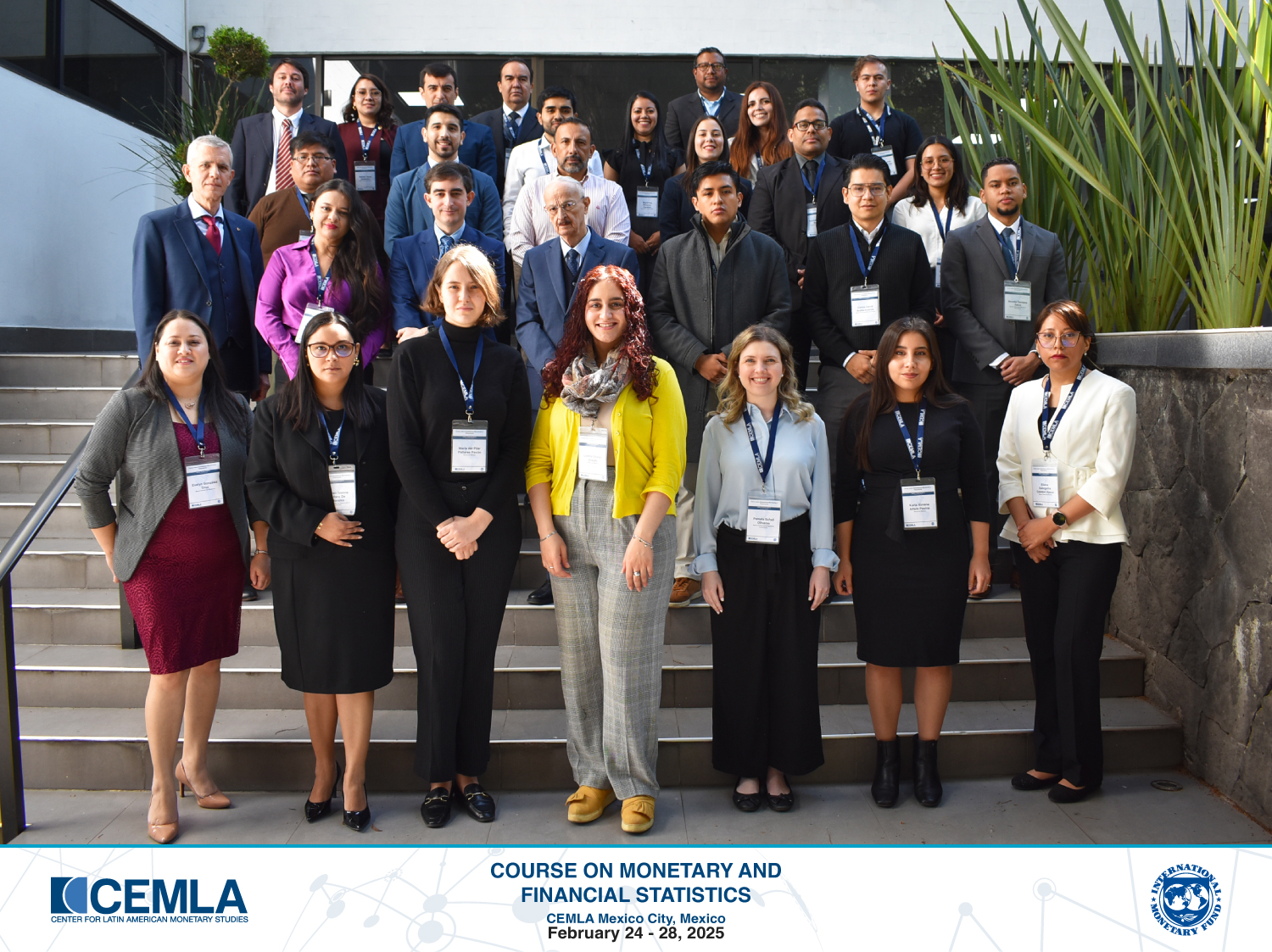

Disponible en Español ![]()
Course on Monetary and Financial Statistics
February 24 - 28, 2025
CEMLA Mexico City, Mexico
Face-to-face format
The course was held from February 24 to 28, 2025, at the CEMLA facilities in Mexico City, under the auspices of the Statistics Department of the International Monetary Fund (IMF). The main objective of the course was to deepen on the fundamentals of compiling monetary and financial statistics, with special attention to depository corporations (DS). The conference material was based on the 2016 Monetary and Financial Statistics Manual and Compilation Guide (MFSMCG) of the IMF.
The event began with an overview of monetary and financial statistics and recent topics in the financial sector: the rise of FinTech companies, central bank digital currencies, and cryptoassets.
The course continued with the definition of institutional units, the assignment of economic territory and residence, and the grouping of institutional sectors, with a specific focus on financial institutions. The course then addressed the definitions of assets and types of financial instruments, as well as the differences between stocks and flows in the context of monetary and financial statistics. The accounting and valuation principles for financial instruments in monetary and financial statistics were discussed.
Regarding monetary issues, various aspects were discussed, as the composition of the monetary base, the money-holding sectors, the money-issuing sectors, and the neutral sectors. The concepts of broad money and credit and liquidity aggregates were also extensively analyzed. The central bank's sectoral balance sheet and the International Monetary Fund's standardized 1SR data reporting forms were then analyzed.
The final part of the course reviewed the compilation of the central bank's sectoral balance sheet and the overview of other credit and depository institutions, as well as the characteristics of Fintech companies, electronic money, and cryptoassets, and their treatment in monetary and financial statistics.
Throughout the course, exercises were conducted on the compilation of the sectoral balance sheets of the central bank, depository institutions, and other credit institutions.
The event was attended by 30 participants from 13 countries, in addition to the IMF speakers.
International Monetary Fund
- José Carlos Moreno Ramírez
- Héctor Cárcel Villanova

